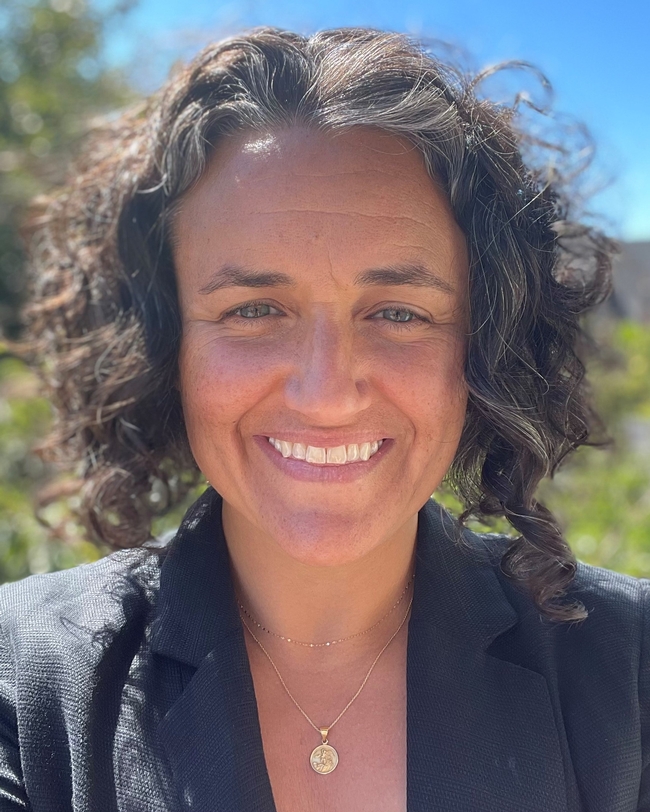New law mandates at least 30 minutes of recess for K-8 public school students
Last year, while working on a bill that would require California public schools to provide at least 30 minutes of recess, State Sen. Josh Newman sought the latest research on youth physical activity. Newman, whose district encompasses parts of Los Angeles, Orange and San Bernardino counties, traveled to the Bay Area to see one of the leading experts in the field.
During several visits with Newman, Hannah Thompson – a Nutrition Policy Institute senior epidemiologist and an assistant research professor in the University of California, Berkeley School of Public Health – shared the most recent science.
Both the American Academy of Pediatrics and Centers for Disease Control and Prevention recommend that children have 20 minutes or more of daily recess. But, when asked about the current “state of recess” across California, Thompson said she only knew of anecdotal evidence at the state level.

“I said, ‘You know what? I don't actually know what is going on in California,'” Thompson recalled. “I contacted a couple of colleagues who had done more national-level work on recess that included samples of California schools – but no one was really able to disaggregate what was happening in California.”
She brought up the bill during a meeting with her fellow researchers at NPI, an institute under UC Agriculture and Natural Resources.
And it turned out that Janice Kao, an NPI academic coordinator, had exactly what she needed.
CalFresh Healthy Living evaluation team provides key recess data
Kao leads a project team that evaluates local health departments' programs of CalFresh Healthy Living – California's version of the educational arm of SNAP (the federally supported Supplemental Nutrition Assistance Program).
As part of that evaluation process, Kao's team coordinates questionnaire administration at SNAP-Ed-eligible schools that are partnering with local health departments on CalFresh Healthy Living interventions, ranging from nutrition programs to physical activity initiatives. The survey asks school administrators about their current policies, environments and practices – including the provisioning of recess.
“It was just really good luck that everything was in the right place at the right time to be able to work together,” Thompson said.
At Thompson's request, Kao and her colleagues processed and cleaned that crucial piece of data, comprising responses from 153 low-income elementary schools in the 2021-22 school year.
“Just 56% of schools reported providing more than 20 minutes of recess daily,” Kao said. “So this was a situation where the data showed, ‘OK, there is some room for improvement, perhaps at that state policy level.'”

Thompson and Rebecca London, a sociologist at UC Santa Cruz, wrote a research brief detailing their analysis of the data. They describe disparities in recess time based on school size and income level of families, with students in larger, less affluent schools generally receiving less daily recess.
Thompson said those disparities are related to funding and academic inequities, as the imperative to boost test scores forced schools to increase certain classroom hours at the expense of recess time.
“We did all this work engineering physical activity out of the school day despite the tremendous body of evidence that shows physically active kids not only are healthier but can concentrate better; they have better academic performance, fewer disruptions, better classroom behavior,” explained Thompson, a former physical education teacher in Oakland. “In trying to address that academic gap, we ended up exacerbating a lot of these public health disparities.”
Virtual learning during the pandemic showed educators and parents – firsthand – the harmful effects of children staying sedentary in front of computer screens for hours. But the resulting momentum for restoring recess and time for physical activity was soon stalled as schools tried to make up for “lost time” in returning to classrooms, Thompson said.
NPI resources, expertise invaluable to lawmakers
Newman's bill, SB 291, was an attempt to lock in those recess minutes that are crucial for student health, development and scholastic performance. Both Thompson and London testified before the Senate Education Committee in April 2023, providing the senators with science-based information and context to guide their policymaking.
“Crafting policies rooted in science is critical for legislators to ensure our policies are impactful,” Newman said. “The work of Dr. Thompson and her colleagues at UC provided clear and useful guidance on the benefits of unstructured play and how to improve health and educational outcomes in California schools.”
Gov. Gavin Newsom signed SB 291 into law last October. Starting this coming school year, public elementary and middle schools across California will be required to give at least 30 minutes of recess to K-5 students – and prohibited from withholding recess as punishment.
Kao said her team was excited that their CalFresh Healthy Living evaluation data was useful for lawmakers, illustrating NPI's important role in informing evidence-based policy.
“I'm hopeful that we can use this same data set to also provide key pieces of information on other types of legislation that's in the works, or newly passed legislation,” Kao said.
Thompson said the challenge now will be ensuring schools have the resources and funding to provide quality time for young people.
“If you only have one schoolyard, and it's already dedicated to PE, what do you do now, if you have to increase your time for recess and you don't have that space?” she said.
Thompson added that she is currently applying for a grant to study how schools across California are adjusting to meet the new requirements.
